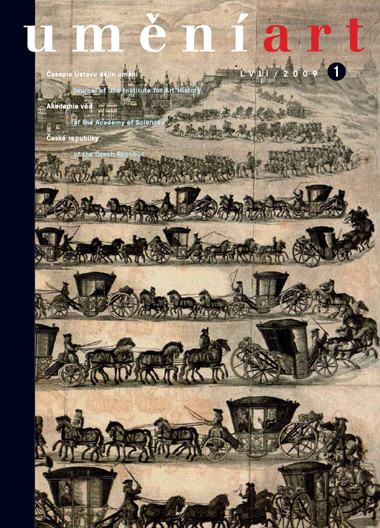Petr Pavelec
Středověké nástěnné malby v bývalé Prelatuře čp. 155 v Českém Krumlově
The Prelacy in Český Krumlov was built around the mid-14th century, and over time it underwent repeated structural renovations. During renovations executed in 2002-2004, mediaeval mural paintings were uncovered and restored in the large hall of the building´s south wing. Two layers of paintings fading into one another were preserved. The older one dated between 1350 and 1380 includes a depiction of Christ on the cross, the ornamental borders of architectural elements, and heraldic motifs. The later painting layer preserved, with just minor modifications, a picture of the Crucifixion and noticeably also part of the ornamental borders from the older layer. New is the painted drapery in the lower part of the south wall and figures of St Catherine, the Assumption, and St Apollonia above. In the centre part of the western wall a modified image of Crucifixion dating from the earlier layer occupies a prominent position. To the left there is a fragment of a painting of an arbor consanguinitatis (tree of blood relationships) and on the right is an arbor affinitatis (tree of relationships by marriage). On the far right there is a fragment of a painted coat-of-arms bearing the red Rožmberk (Rosenberg) rose. On the north wall a painting of the personification of Death has survived. The northern wall is decorated with the figure of St Barbora, only the torso of which has survived, and noticeably also another female or male saint, of which only a fragment of the aureole survived. An exceptionally valuable part of this layer are the paintings of the relationships trees, which are unparalleled works in Czech mural painting. Their formal conception derives from the morphology of diagrams found in incunabula and old prints at the end of the 15th century, such as in Johann Andreas's well-known treatise Lectura super arboribus consanguinitatis et affinitatis. Several editions of old prints with this treatise, along with illustrations of these relationships trees, survived in the former Krumlov library of the House of Rožmberk and in the Chaplain's library in Krumlov, and it is possible to assume that some of these illustrations may have served as the model for the painting in the large hall of the Prelacy.
Full-text in the Digital Library of the Czech Academy of Sciences:
https://kramerius.lib.cas.cz/uuid/uuid:3d43626f-73fc-731b-11eb-d178cb9bbf43
< back

